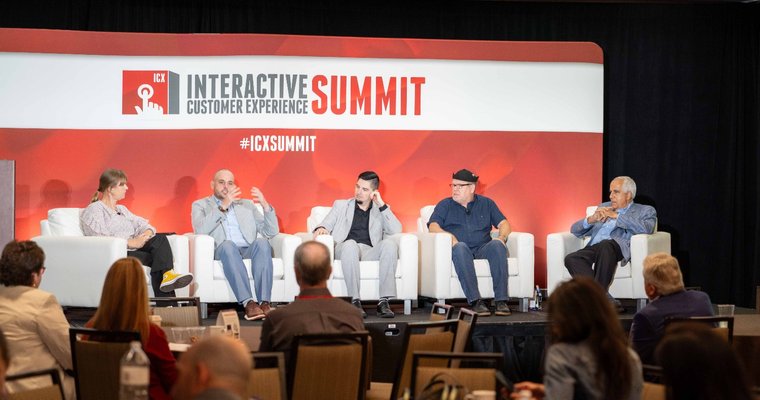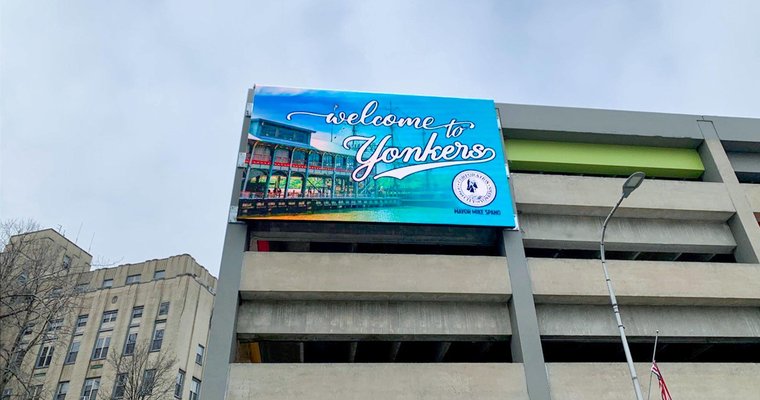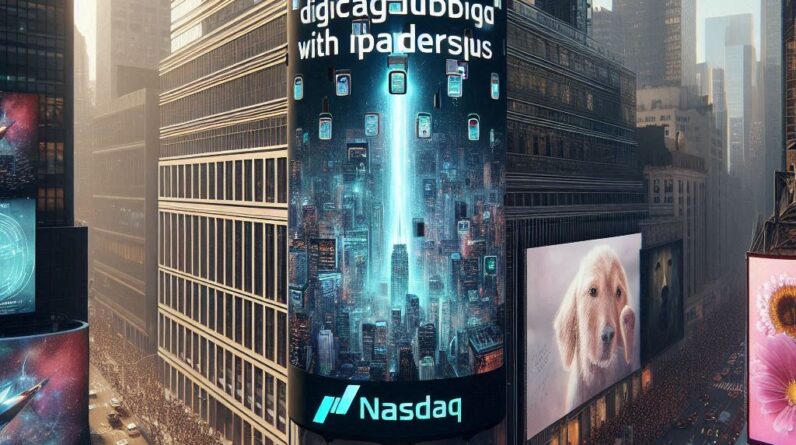
[ad_1]
A panel of industry experts convened to discuss this and strategies for businesses during this year’s Interactive Customer Experience Summit in Charlotte, North Carolina.
With the rise of emerging tech like AI, holograms, and more, some kiosks and airport wayfinding stations are starting to look less like simple kiosks and more like something from Blade Runner. How can businesses succeed amid so much change?
A panel of industry experts convened to discuss the breakneck pace of innovation in the industry, along with strategies for businesses during this year’s Interactive Customer Experience Summit in Charlotte, North Carolina. In a Wednesday morning session on Sept. 13, 2023, panelists convened in a session entitled “What’s the latest and greatest with self-service?”
Vending and the rise of “convenience services”
The first lesson from the sheer size of change has been the need to adapt and pivot, according to panelists like Clark Whittington, founder of Art-O-Mat.
“We take banned cigarette machines and turn them into functional art installations that deliver affordable art for five bucks,” Whittington said. “[We] started in ’97 with one machine selling my own art for a dollar each. Now we’re 26 years on, in over 200 venues around the country (and a few outside the U.S.”
Joe Loparco, president at Charlotte-based Automated Services International Inc., has been operating since the early days of the industry, which means he’s seen the pace, depth and breadth of change up close. He’s also in touch with many practical ways to adapt in the face of change — after all, it is his firm’s specialty.
“We’re principally in the refurbishment of used vending machines business — and taking them to higher levels of technology advancements,” Loparco said. “I was especially interested to meet Clark [Whittington] because I’m probably one of the few people that remember cigarette vending machines. It’s an integral part of my business.
“I think all of you in this room represent the latest and greatest,” Loparco continued. “This really has been an evolution for me, over the last 10 years, through the advancing technology and the transformation of my core business, being vending machines, over to the world of convenience services and all of the technologies that have been developed and are being brought to market — some of which we’ve been instrumental in doing as a strategic partner for some of the software companies.”
Learning to evolve
Moderator Melanie Endres, CEO, Code Factory SL asked the panel to address how their firms centralize user experience in their self-service specialties.
Loparco said that his firm’s specialization makes its answer a bit unique. “My end is not so much a matter of bringing that technology of our own device to the consumer, but rather aligning ourselves with strategic partners that are primarily in the software business, and taking their technology — in some instances — [and] utilizing it to transform traditional vending equipment into more of a current, frictionless type of offering.
“We just completed a large project in that regard for a Swiss technology called Ivenda, who has a relationship with Mars Wrigley. The essence of it was to take their technology, install it — as it was in this case, into Chinese manufacturing equipment, utilizing 50-inch touchscreens and advertising content that they are developing.”
Art lessons: Adding value, human touch with technology
Whittington agreed that being able to evolve is central in this time of change.
“With Art-O-Mat, I never expected to be doing this,” Whittington said. “A lot of my art ended up in dumpsters, or I used to give it away, because I always thought that the idea behind a piece of art was more important than the presentation.”
Being able to seize moments of opportunity is key in this kind of innovation. Back in 1997, Whittington experienced a number of synchronicities, including a co-worker who had (as he calls it) “a Pavlovian reaction to snack wrappers.” Any time someone crinkled cellophane and made the sound of a candy bar wrapper, the co-worker would get up and go buy something from a vending machine.
Also, the banning of cigarette machines in 1997 meant that when he visited a local vending machine company, the banned machines were free; if it hadn’t been for the ban, Whittington says he would have been using snack machines. Perhaps surprisingly, becoming a pioneer in blending automation with the art world resulted in tangible human benefits.
“What I noticed was that people are curious, and they’re also intimidated,” Whittington said. “So what happened immediately with Art-O-Mat [was]: the price point for a small work of art reduced the stigma of art ‘being for the rich,’ and we’re reaching people who may never have bought art before, or been into a museum. And we’re giving opportunities to artists who maybe have never sold their work before. So, what I’m seeing is, the analog approach to this brings out a lot of humanity, even though it’s a very cold, heavy machine.”
Banking lessons: Make innovation available, but don’t force it
The automation and self-service revolution isn’t just for consumer-facing brands; it’s big for banks too, but the nuance depends on generation, according to William Sullivan IV, VP, Sr. Client Experience Manager at Cambridge Trust.
“The latest and greatest depends on the generation that we’re serving,” Sullivan said. “I think if you look at banking over time, it’s all been based on efficiency and ease of use; so if you go back as far as ATMs, telephone banking — all these things were methodologies around self-service.”
But successful innovation doesn’t just mean throwing something new at your customer and forcing them to adopt it; you have to be nuanced, and echoing a theme from E.J. Kritz (LINK) and other ICX Summit presenters, experience shows that you have to listen to your customers and provide them options, allowing them to select the experience that they want.
“We’ve found that just because it is the latest and greatest, it does not mean that the adoption rate is high,” Sullivan added. “Generational adoption rates are very different based on their habits.”
One example is how generations that were traditionally resistant to mobile banking apps changed their habits very quickly during the pandemic.
“When COVID hit, all of a sudden, they skipped over the mobile, they went to the iPad, and they were able to do Zoom calls and FaceTime with the grandkids, and they adopted the banking apps because they were comfortable with the technology.”
In banking as with other fields, providing customers with options that allow them to choose their experience is vital to making them feel comfortable enough to engage with newer technologies, because they feel that they want to try it out (rather than feeling like it is being forced on them). For example, in banking, success with sometimes very high net worth individuals and families has meant that Sullivan’s bank has had to keep options available even when it would be more convenient from an operations standpoint to force everyone to use the same systems.
“And that means we have to keep legacy systems out there,” Sullivan said. “And those legacy systems won’t talk to each other. So, one of the things that’s been talked about throughout this conference is: how do you get things to talk to each other?
“Banking is notorious for not being able to do that — and it’s all limitations based on core systems,” he added. “It’s all been layered into silos and they don’t talk to each other.”
While larger banks may be forced to move all their customers onto a single platform due to the sheer size of their customer base, Sullivan’s institution is a smaller private bank with many high net worth individuals as customers — and this customer base likes to feel a personal approach in their banking, along with options for the convenience of modern technology advancements in self-service.
You have to know your customer, understand generational differences, and be sensitive enough to provide a comfortable range of options so as not to alienate customers who prefer the legacy systems.
“I think we have to be careful when we go into the self-service piece, specifically in the financial arena,” Sullivan said. “These people’s habits are not easily changed, but the groups that are coming in behind them want access to it [new technology]. So we have to make it available, but we can’t force it.”
The ICX Summit, presented by the ICX Association, is an annual gathering where industry-leading brands gather to share powerful strategies to connect with customers, design memorable experiences, and build brand loyalty. You can learn more about the ICX Association at icxa.org.
Daniel Brown is the editor of Digital Signage Today, a contributing editor for Automation & Self-Service, and an accomplished writer and multimedia content producer with extensive experience covering technology and business. His work has appeared in a range of business and technology publications, including interviews with eminent business leaders, inventors and technologists. He has written extensively on AI and the integration of technology and business strategy with empathy and the human touch. Brown is the author of two novels and a podcaster. His previous experience includes IT work at an Ivy League research institution, education and business consulting, and retail sales and management.
[ad_2]
Source link






